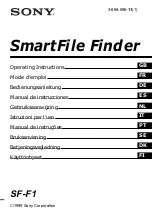
No. 2A201-519EN*A
30
7.5
Wiring Pits and Wall Ducts
Wiring pits, wall ducts, and conduit pipes should be provided to facilitate wiring and
interconnections between the units of the system.
Be sure to give the following instructions to prevent incorrect system operation or abnormal image
generation due to noise.
7.5.1
Pit and duct sizes
The pit and duct sizes depend on the layout of the units, the number of cables, the sectional
area of bundled cables, and required clearances. These factors must be checked by the field
engineer. The clearance required for a pit or a duct are as follows:
•
X-ray system (gantry rotation section) power ....................... 400 percent of the total sectional
area of the cables
•
For the gantry stationary section/console
(for power and signal generation) ......................................... 250 percent of the total sectional
area of the cables
For the cable interconnections between the units, the number of cables, and their sectional
areas, see subsection 8.6 "Cable Connections Between the Units".
Use optical fiber cables for the following connections. The pit and duct sizes (structure) must be
larger than 110 mm (the minimum permissible bending radius for optical fiber cables).
•
Signal cable between the gantry and the console (S01, S04, S05, S06)
•
Signal cable between the CPU BOX and the REC BOX (CS01, CS04)
7.5.2
Partitions in the pit and duct
The wiring pit and duct should preferably be divided into three sections as a countermeasure
against noise: one for X-ray system (gantry rotation section) power, one for signal lines between
the gantry and the console, and one for gantry stationary section/console power and power lines
between the CPU BOX and REC BOX. At a minimum there must be at least two sections: one
for power lines and one for signal lines.
















































